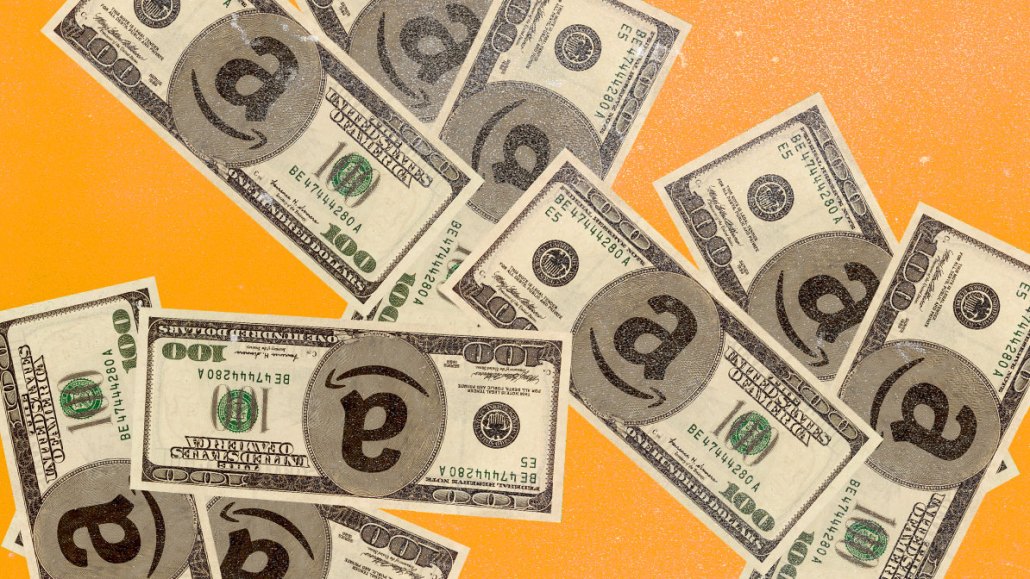Save 50% on a 3-month Digiday+ membership. Ends Dec 12.
Advertising Week Briefing: Amazon is primed to take over the ad industry

Keep up to date with Digiday’s annual coverage of Advertising Week in New York. More from the series →
Advertising Week New York often functions like a mirror held up to the industry — its agenda is less a self-help pamphlet than a barometer of where adland believes it’s headed.
If you’re watching the 2025 schedule, you’ll see that AI, creators, and existential musings dominate the programming — which is no accident.
Given that framing, it’s no surprise that Amazon stands out in this year’s line-up as the Big Tech name with the most visibility: a dozen scheduled appearances across panels, fireside chats, and sessions — that’s as many as Google and Meta, combined.
That prominence is fitting — after all, today is Amazon Prime Day. Amazon’s ad ambitions now reach well beyond the simple “sponsor my product” paradigm. Its presence spans audio, gaming, sports, and streaming content — all areas where it can both insert itself and monetize.
More lucratively, Amazon controls trillions of data points from its retail business, giving it a unique ability to connect exposure to actual purchasing behavior (i.e., measurement). Combine content reach with direct shopper signals, and you get a formidable pitch to advertisers.
Amazon’s expanding grip
Amazon’s flagship move this week (and arguably the biggest ad-industry news) is the partnership with Microsoft, which amounts to absorbing Microsoft’s demand-side platform (Microsoft Invest, neé AppNexus, or Xandr DSP) into Amazon’s own DSP infrastructure.
By March, Microsoft’s ad buying arm will sunset, and advertisers across global markets will be migrated into Amazon’s ecosystem — via Amazon Ads reps or its activation partner program. That’s not just consolidation of clients; it’s consolidation of inventory control.
In practice, that means Amazon is weaving more of the open web directly into its DSP pitch. Advertisers who come via Microsoft get preferential access to inventory, performance insights tied to Amazon’s retail data, and, in many cases, lower take rates. Once a deal’s in place, Amazon can say: “Use our DSP, get access to our shopper data + inventory reach + potentially below-market pricing.”
Amazon has already locked in deals with Roku, Disney, Netflix, Spotify, and SiriusXM — each of these adds depth to its CTV and streaming footprint. In the U.S., Amazon DSP clients can now reach about 80 million CTV households using a mix of Amazon-owned inventory plus Roku partnerships.
On pricing, Amazon is playing aggressively: ad buyers say DSP fees usually run between 4% – 8%, but for large spend and favorable inventory, Amazon’s take rates have dropped to 1% — or even zero in rare instances.
For advertisers, the pitch is increasingly clear: reach, plus measurement, plus price in one stack. That’s the “holy trinity” Amazon is offering.
Still, this isn’t an obituary for The Trade Desk’s obituary — the industry’s second-largest DSP behind Google’s DV 360. The shifts are incremental so far.
Most reallocation seems to be in the low hundreds of millions (not the billions). But the dynamic is changing: what used to differentiate DSPs (exclusive deals, unique supply) can now be replicated or competed with. What’s harder to match is the first-party data Amazon holds.
A critical motivator behind all this is profitability. AWS fundamentally reshaped Amazon’s margin profile; now the company needs ad businesses to carry more of the load. Advertising is being upgraded from a side hustle to a key component of its business — and the DSP rework reflects that ambition.
From the pitch deck leaked earlier this year, you can see how Amazon’s evolving its messaging: the DSP is no longer just for Amazon inventory, but a push into the open web (they now claim it can reach about 90% of U.S. consumers).
In Q2 alone, the e-commerce giant’s ad business pulled in $15.7 billion, up 22% year-on-year, with much of that growth attributed to its DSP’s momentum; ergo, it’s clear to see how, unlike its namesake forested region in South America, this part of Amazon is in anything but decline.
More in Marketing

‘A trader won’t need to leave our platform’: PMG builds its own CTV buying platform
The platform, called Alli Buyer Cloud, sits inside PMG’s broader operating system Alli. It’s currently in alpha testing with three clients.

Why 2026 could be Snap’s biggest year yet – according to one exec
Snap’s senior director of product marketing, Abby Laursen talked to Digiday about its campaign automation plans for 2026.

‘We just did the math’: The new baseline for ad tech transparency
Ad execs said the industry is shifting toward a renewed transparency push driven as much by day-to-day operational pressure as by principle.








